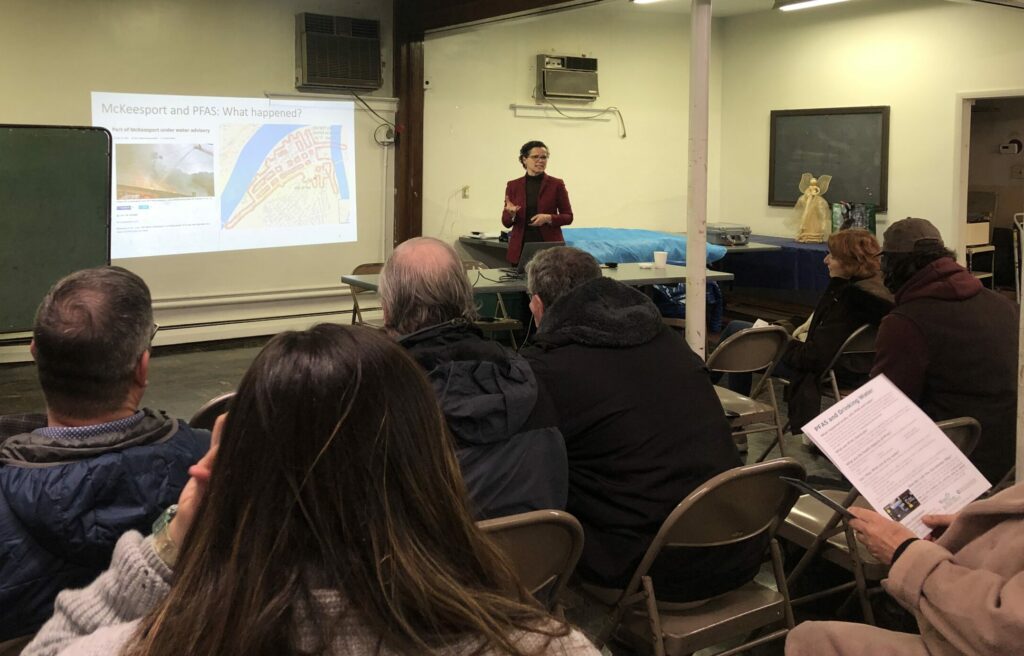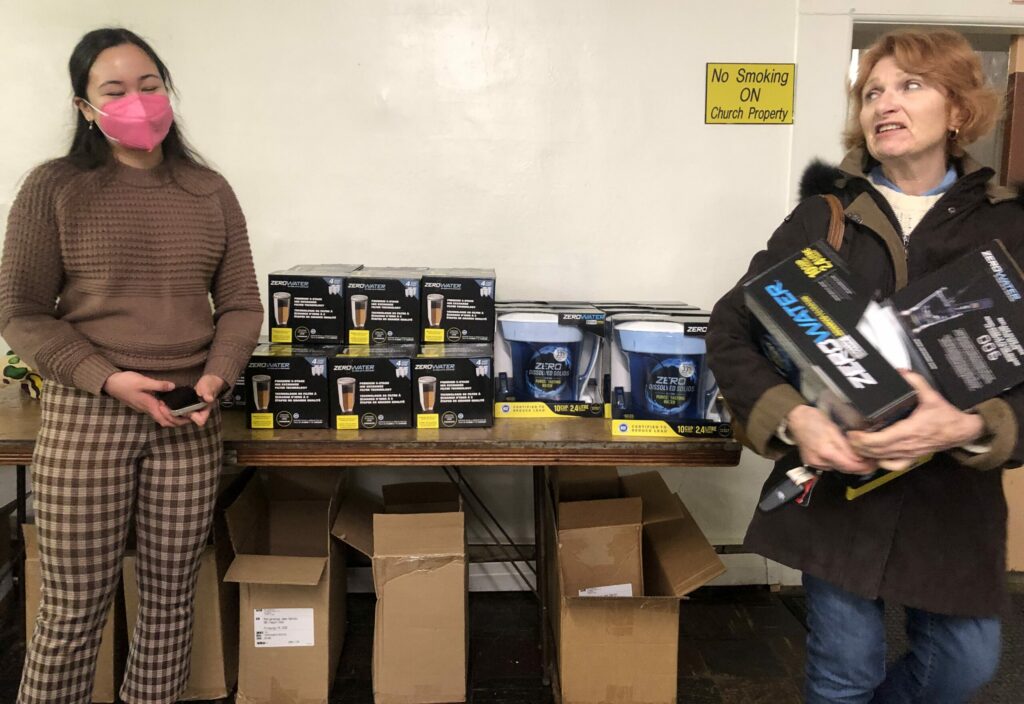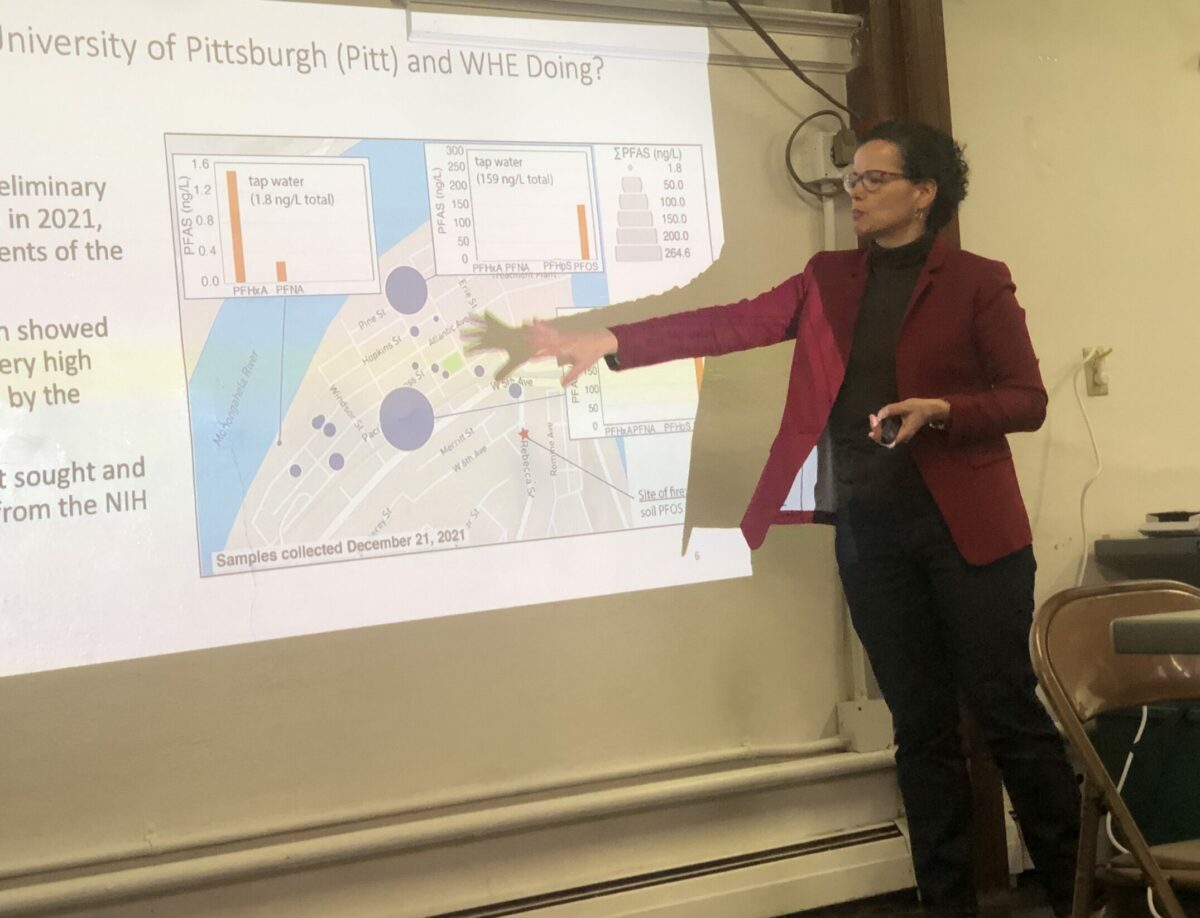As the McKeesport sky faded into a pink sunset, local residents gathered in the basement of West Side United Methodist Church on Atlantic Avenue Thursday night to hear the results of a recent water sampling study conducted in their neighborhoods.
The University of Pittsburgh study looks at potentially high levels of PFAS, a group of long-lasting manufactured chemicals, in the water and soil of the Lower 10th Ward of McKeesport after a fire contaminated the area in July 2021.
PFAS, per- and polyfluoroalkyl substances, were detected in the water distribution system of McKeesport resulting in a “do not use” water advisory in the Lower 10th Ward from July through August of that year.
Carla Ng, Ph.D., an associate professor of civil and environmental engineering at the University of Pittsburgh, and her team sampled tap water for PFAS chemicals in December 2021 after being alerted of possible contamination by Women for a Healthy Environment.
More testing was conducted in November and December 2022 to see if harmful concentrations persisted.
These new tests reflect lower levels of PFAS chemicals in household tap water, Ng shared.
PFAS can be found in things such as fabric and leather coatings, household cleaning products and specialized firefighting foams. Though some of these firefighting foams have been phased out due to concerns about their toxic effects, Ng said there were reports of such foams being used in the July 2021 incident.
Two common PFAS compounds, perfluorooctanoic acid (PFOA) and perfluorooctane sulfonate (PFOS), can be in old firefighting foams and are known to have many different types of health effects in humans.
Ng said they have been linked to thyroid disease, liver damage, kidney cancer and testicular cancer and can impact fertility.
This month, the state set regulatory guidelines for drinking water in regard to PFAS. The maximum contaminant level set for PFOA is 14 nanograms per liter while PFOS is set at 18 ng/L.
“These chemicals can be toxic even at very low concentration, so we should be thinking about where they’re present,” Ng said.
Samples from 2021 were “very variable” she explained. Some had low concentrations while others had much higher levels of PFAS. This spurred wider research from Ng and her team.
Last winter, 16 samples were collected from 16 homes, 13 of which were in the Lower 10th Ward. Ng said they collected two water samples each from the kitchen, bath and laundry sink. Aerators were also tested for PFAS chemicals, and filters were taken for further assessment.
In the homes tested during the second round of samples, almost every one was below the maximum contaminant level for PFOS.
“So that’s good because it means that the thing that we thought was the signal from the foam the first time around seems to be gone,” Ng said.

Because the limits for PFOA are lower, about half the homes looked at had levels at or above the PFOA maximum contaminant level.
Individual results of the water samples were available for residents to collect at Thursday night’s meeting.
“If you’re in one of those homes that exceed the MCL for PFOA, it’s probably a good idea to continue filtering your drinking water, and the carbon-based and multistage filters are pretty effective in removing both PFOA and PFOS,” Ng recommended. “The only caveat here is you have to change the filters out regularly.”
“I think if you have somebody who’s immunocompromised in your home, if you’re really worried about it, the agency you have is to filter the water, and that will reduce the amount of these two chemicals,” she said.
Ng said they plan to continue testing the water to see if PFAS levels remain steady or decline. She encouraged attendees to sign up to have their water tested. She said they will also be testing soil in the future to see what effects contamination might have had following the fire.
John Ashton, assistant manager of operations at the Municipal Authority of Westmoreland County, told attendees that the authority has been collecting and will continue to collect tap water samples. So far, their results have found lower levels of PFAS than Ng’s study. He credited this discrepancy to the fact that the MAWC sends its samples to a certified lab by the state that uses a different methodology than Ng.
Barbara Girgash, a resident of McKeesport who had her water tested, wondered if there were still concerns about drinking tap water.
“I’m frustrated,” she said. “I don’t know what I’m drinking.”
When Girgash asked the audience members to raise their hands if they are continuing to filter their water, about seven of the more than two dozen did.
One man with his hand up proclaimed how expensive the filters were and hard to get, due to back-order issues.
“It takes me 20 minutes to filter my water,” Girgash said. “That’s 40 minutes of my day taken up. It’s a pain. I just want to know what’s going on.”

Hannah is a reporter at the Pittsburgh Post-Gazette, but she's currently on strike. Email her hwyman@unionprogress.com.


